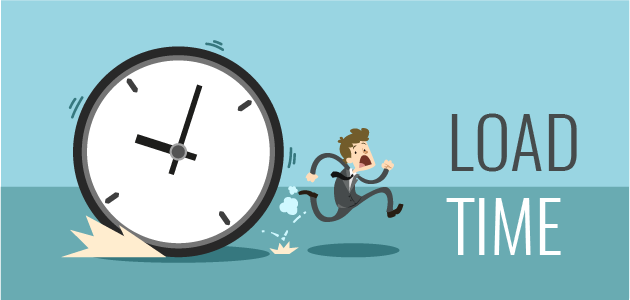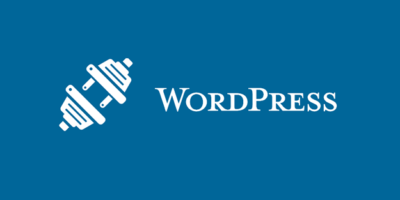Do You Know That Speed Matters for a Website?
You’ll be amazed how important speed is for your website. According to Amazon, they see an increase in revenue by 1% for every 100 milliseconds reduction in their website loading speed. Speed is also important for SEO. According to Google, website loading speed will affect the website’s ranking in Google search results. This article will show you how to make you website faster.
First of all, how fast a website loading speed should be like? For the record, the results may vary depending on who you are asking but generally, here are some guidelines that you can use:
• Below 1 second – It’s perfect
• 1 to 3 seconds – Above average (but can be improved)
• 3 to 7 seconds – Below average
• Over 7 seconds – Poor (and you need to do something about it immediately)
In today’s world, most websites are loading between 2 to 7 seconds. A human’s attention span is very short, and it is just a couple of seconds. For a website that takes more than 3 seconds to load, there is a high chance that these visitors are going to abandon the page even before it completes, thus increasing your bounce rate.
Since Google talked about the ranking factor, webmasters and website owners are always finding different ways to reduce website loading speed. And make no mistakes from it. The process of improving website loading speed can be challenging, nerve wracking and even hair pulling.
Lucky for you, carry on reading to find some of the best methods to reduce your website loading speed without hassle.
1. Use a Content Delivery Network (CDN)
This service allows you to store your website content in servers around the world. Therefore, your website will take only a fraction of the time used before to load completely since the content is downloaded into the visitor’s device from servers nearest to their location.
As the bandwidth is divided across different servers, CDN will outperform any single server in terms of load, and it will also protect you from hacker’s attacks and traffic spikes.
There are both free and paid Content Delivery Network services that you can choose from. CloudFlare and Incapsula are two of the most popular Content Delivery Network services on the market today. They offer both free and paid services which are entirely based on your budget. In most cases, the free services they offer are pretty impressive and can speed up your website quickly and hassle-free.
Do not worry if you have limited or no coding knowledge as the integration process between the CDN and your web hosting is a breeze. Furthermore, there are tutorials to guide you along the way too.
If you have a website with a lot of traffic, you may want to consider using paid CDN services such as MaxCDN. They are the leader in the market because they offer competitive prices. With the integration of MaxCDN and a good web host, the website will usually load under 1 second.
2. Choose the Right Web Hosting Company
The website loading speed depends highly on the server you are located at. You may have the best settings and configurations on your website but if the server is slow, it will increase the time needed to serve content to your visitors.
Most web hosting companies offer unlimited shared web hosting services. To increase the profit margin, they will pack thousands of accounts in one server. This will lead to a lower loading speed because hosting companies are overselling the server space and indirectly, affecting the performance of your website.
Dedicated web hosting services are usually the best as they provide top notch services as well as high-performance servers. Apart from that, you do not need to be messing around with the server’s configuration as the servers are already optimized for optimum performance.
Here are some of the highly recommended web hosting services with affordable prices:
• WPEngine
• FlyWheel
• Web Synthesis
3. Use a Caching Plugin
WordPress users are lucky to have several different caching plugins to choose from. It is the easiest and quickest way to reduce your website loading speed with a caching plugin such as W3 Total Cache or WP Super Cache.
A website will load faster if active data is cached correctly. When you return to a frequently accessed website, there is a real possibility that the browser will keep a portion of the website’s data on the browser itself. Loading data from the cache will ensure that the website loads faster and this method can be implemented using a caching plugin.
The caching plugin is very efficient when it comes to reducing the page’s loading speed. For example, the plugin will be saving dynamically generated HTML files and serving them directly from the cache, instead of loading all the scripts from the server.
Here are some tips for you when choosing the best caching plugin:
• Cost – There are many free plugins which you can download directly from the official WordPress repository, so buying a premium plugin may not be needed.
• Complexity and intuitiveness – You may want to choose a caching plugin that is easy to setup if you have limited knowledge in this field.
• Support – Choose a plugin that is constantly updated and support is often provided by the developers.
4. Leverage Browser Caching – Enable Expire Headers
What are Expire headers?
Expire headers tell the browser whether to request a particular file from the browser’s cache or to get a new one from the webserver. Of course, this will only work when the visitor has previously visited your page.
Expire headers is extremely efficient in reducing the website loading speed by:
• Reduce the needs to constantly download the same file from your webserver
• Reduce the numbers of HTTP requests
Here are some simple steps you can follow to enable Expire header feature on your website:
1. Head over to your hosting cPanel.
2. Click on File Manager.
3. Use the search button to search for “.htaccess”.
4. You may want to download the original file before performing the modification.
5. Open the file using Notepad (or Editor) and paste the following codes in it (do not overwrite the content in the file).
# Enable expirations
ExpiresActive On
# Default directive
ExpiresDefault “access plus 1 month”
# My favicon
ExpiresByType image/x-icon “access plus 1 year”
# Images
ExpiresByType image/gif “access plus 1 month”
ExpiresByType image/png “access plus 1 month”
ExpiresByType image/jpg “access plus 1 month”
ExpiresByType image/jpeg “access plus 1 month”
# CSS
ExpiresByType text/css “access plus 1 month”
# Javascript
ExpiresByType application/javascript “access plus 1 year”
6. Save the file and you’re all set.
5. Choose the Right WordPress Theme
There are thousands of free WordPress themes that you can use, but if you are concern about website speed, it is highly recommended to use a premium theme.
When using premium WordPress themes, you receive:
• Clean code which allows your website to load faster.
• Updates with security fixes and patches
• Better SEO
• Support
As you can see, using premium themes such as Genesis Framework and Thrive Themes will ensure that not only your website will look good, but it will also perform extremely well in both website loading speed and improved visibility in the search result pages.
Furthermore, most premium WordPress themes come with a lifetime update, and there is no need to repurchase the license in the future.
Summary
Website loading speed is more important now than ever before. As technology is continually improving, the visitor’s demand will also increase especially when it comes to loading speed.
The above tips will ensure that you can reduce website loading speed quickly with minimum or without any coding knowledge. If you have any questions or you want to share your experience, feel free to write in the comments field below.










Leave a Reply